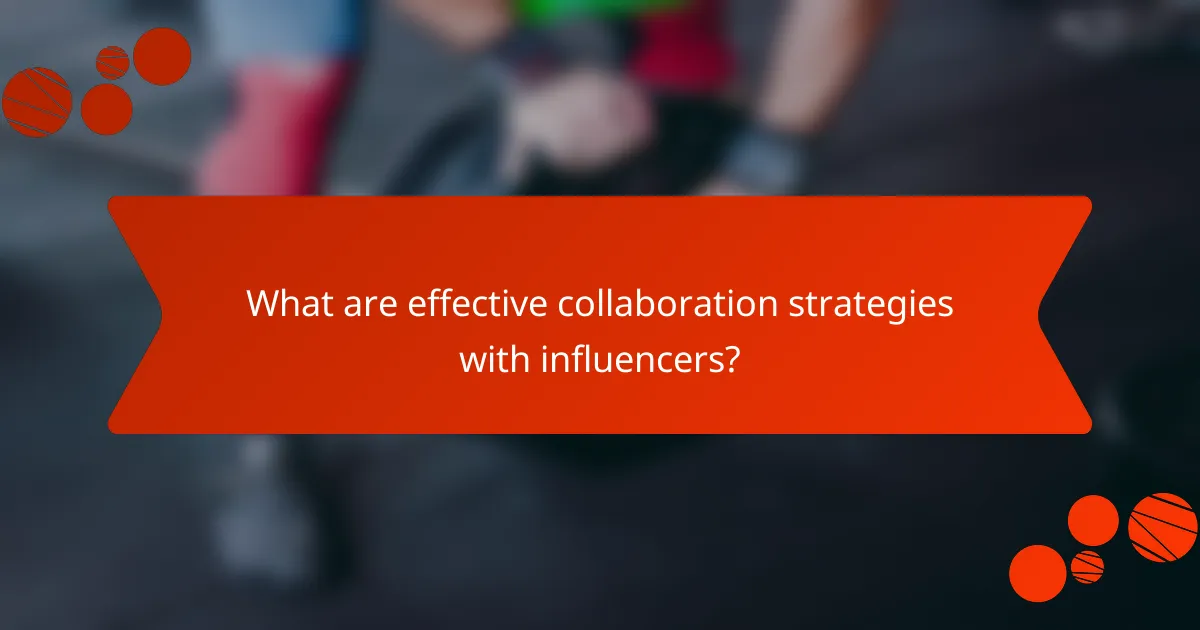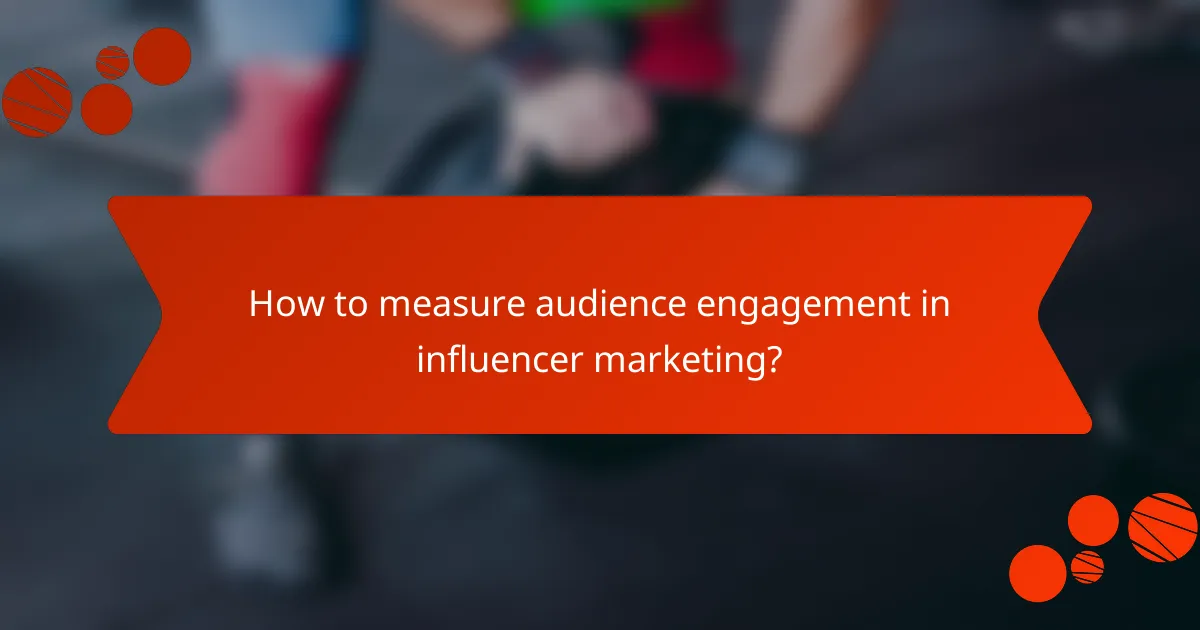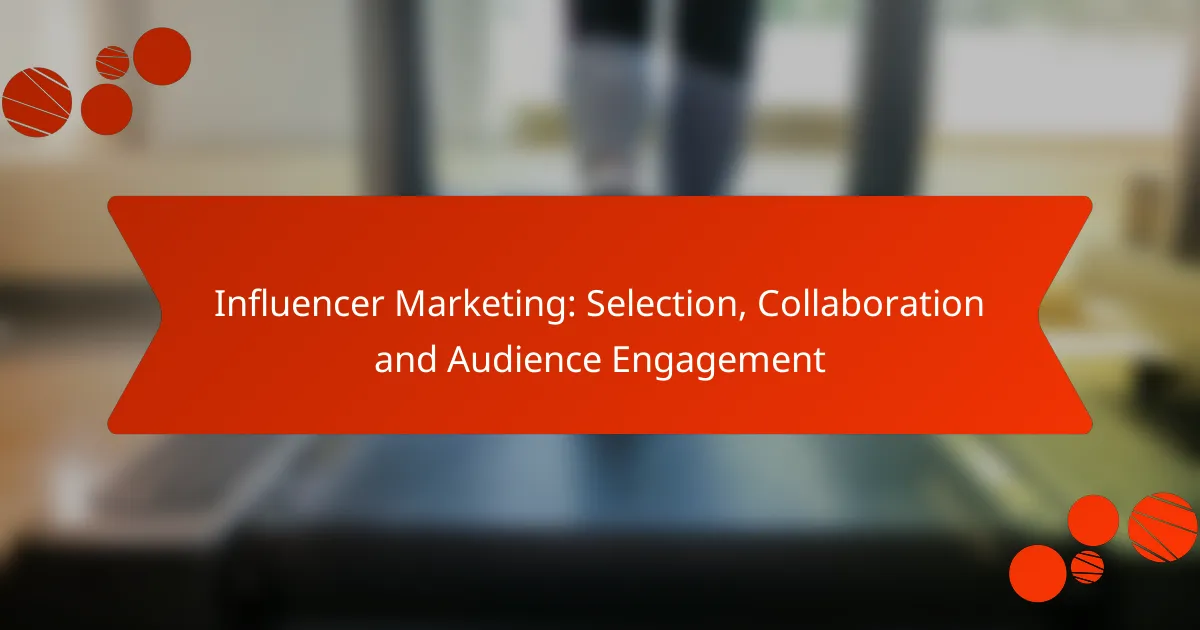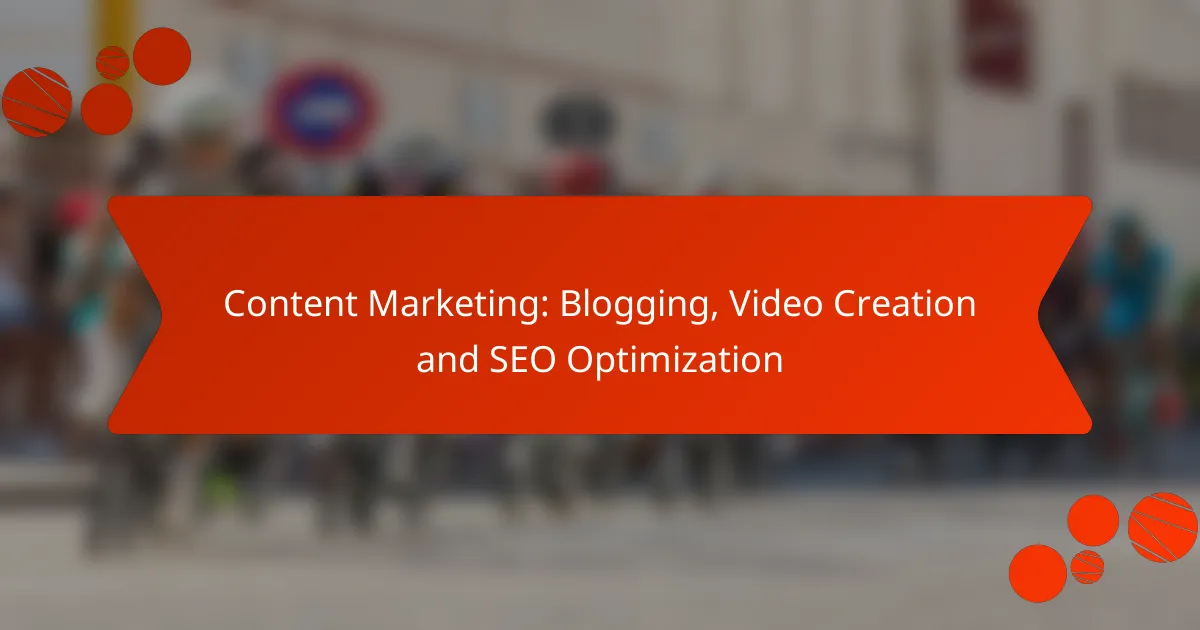Influencer marketing has become a vital strategy for brands seeking to connect with their target audiences authentically. By carefully selecting influencers whose values align with your brand and establishing clear collaboration strategies, you can enhance the effectiveness of your campaigns. Additionally, measuring audience engagement through key metrics allows you to assess the impact of your influencer partnerships and optimize future efforts.

How to select the right influencers for your campaign?
Selecting the right influencers for your campaign involves identifying individuals whose audience aligns with your target market and whose values resonate with your brand. This process ensures that your marketing efforts are effective and yield a positive return on investment.
Identify niche relevance
To ensure your influencer selection is effective, focus on niche relevance. Choose influencers who specialize in areas closely related to your product or service, as their audience is more likely to be interested in what you offer.
For example, if you sell organic skincare products, partnering with beauty influencers who emphasize natural ingredients will likely yield better results than those who focus on luxury brands.
Evaluate audience demographics
Understanding the demographics of an influencer’s audience is crucial. Look for influencers whose followers match your target market in terms of age, gender, location, and interests.
Utilize tools or analytics provided by social media platforms to gather insights on audience composition. This data helps ensure your message reaches the right people, increasing the likelihood of engagement and conversions.
Assess engagement rates
Engagement rates are a key indicator of an influencer’s effectiveness. Rather than solely focusing on follower counts, analyze likes, comments, shares, and overall interaction with their content.
A good engagement rate typically ranges from 1% to 5%. Influencers with higher engagement rates often have more loyal and active audiences, which can lead to better campaign outcomes.
Review past collaborations
Investigating an influencer’s previous partnerships can provide valuable insights. Look for case studies or testimonials that showcase their ability to drive results for brands similar to yours.
Pay attention to the quality of content produced during past collaborations and the feedback from their audience. This can help you gauge whether they align with your brand’s image and values.
Utilize influencer marketing platforms
Influencer marketing platforms can simplify the selection process by providing databases of influencers along with their metrics. These platforms often allow you to filter influencers based on niche, audience demographics, and engagement rates.
Consider using platforms like AspireIQ, Upfluence, or Influencity to streamline your search and ensure you find influencers who are a good fit for your campaign goals.

What are effective collaboration strategies with influencers?
Effective collaboration strategies with influencers involve setting clear objectives, ensuring fair compensation, crafting detailed creative briefs, and maintaining open lines of communication. These strategies help align expectations and enhance the overall success of influencer partnerships.
Establish clear goals
Establishing clear goals is crucial for any influencer collaboration. Define what you want to achieve, whether it’s increasing brand awareness, driving sales, or enhancing engagement. Specific, measurable objectives help guide the campaign and evaluate its success.
For example, you might aim for a 20% increase in website traffic or a specific number of social media mentions within a set timeframe. Clear goals provide a benchmark for both you and the influencer to work towards.
Negotiate fair compensation
Negotiating fair compensation is essential for building a positive relationship with influencers. Compensation can vary widely based on the influencer’s reach, engagement rates, and the complexity of the campaign. Consider offering a mix of monetary payment and product exchanges to create a win-win scenario.
For instance, micro-influencers may accept lower fees, often in the range of a few hundred to a couple of thousand USD, while larger influencers might command several thousand dollars per post. Always ensure that the compensation reflects the value they bring to your brand.
Develop creative briefs
Developing creative briefs helps ensure that both parties are aligned on the campaign’s vision and deliverables. A well-crafted brief should include brand guidelines, key messages, target audience insights, and any specific content requirements. This clarity minimizes misunderstandings and sets the stage for successful content creation.
Include examples of desired outcomes, such as preferred formats (videos, stories, posts) and any mandatory hashtags or links. A comprehensive brief empowers influencers to produce authentic content that resonates with their audience while meeting your brand’s objectives.
Foster open communication
Fostering open communication throughout the collaboration process is vital for addressing any issues and ensuring a smooth workflow. Regular check-ins can help maintain alignment and provide opportunities for feedback. Encourage influencers to share their thoughts and ideas, as they often have valuable insights into their audience.
Utilize tools like email, messaging apps, or project management software to facilitate ongoing dialogue. This proactive approach can help build trust and strengthen the partnership, ultimately leading to more effective campaigns and better results.

How to measure audience engagement in influencer marketing?
Measuring audience engagement in influencer marketing involves evaluating how effectively an influencer connects with their audience. Key metrics include likes, comments, shares, and overall interaction rates, which provide insights into the campaign’s impact.
Track engagement metrics
Engagement metrics are essential for assessing how well an influencer’s content resonates with their audience. Common metrics include likes, comments, shares, and saves. Aim for a combination of these metrics to get a comprehensive view of engagement levels.
For example, a post with a high number of comments but fewer likes may indicate a strong conversation, while a high share count suggests that the content is deemed valuable by the audience. Regularly monitoring these metrics can help identify trends and inform future collaborations.
Analyze conversion rates
Conversion rates measure how effectively influencer content drives desired actions, such as website visits or purchases. To calculate this, track the number of conversions against the total audience reached. A good conversion rate in influencer marketing typically ranges from 1% to 5%, depending on the industry.
Utilize unique tracking links or discount codes to attribute conversions directly to specific influencers. This approach not only helps in measuring effectiveness but also aids in optimizing future campaigns based on what works best.
Utilize social listening tools
Social listening tools help monitor brand mentions, sentiment, and audience conversations related to influencer campaigns. These tools can provide insights into how audiences perceive the influencer and the brand, highlighting areas for improvement.
Popular tools include Hootsuite, Brandwatch, and Sprout Social. By analyzing the data gathered, marketers can adjust strategies in real-time, ensuring that campaigns remain relevant and engaging.
Gather qualitative feedback
Qualitative feedback involves collecting opinions and insights from the audience regarding the influencer’s content. This can be done through surveys, focus groups, or direct comments on social media posts. Such feedback can reveal the emotional connection the audience has with the influencer and the brand.
Consider asking specific questions about what resonated with the audience or how they felt about the messaging. This information can be invaluable for refining future campaigns and selecting influencers who align well with brand values.

What are the best practices for influencer marketing in the UK?
The best practices for influencer marketing in the UK focus on compliance, authenticity, and local trends. Brands should ensure their campaigns adhere to advertising regulations, resonate with their audience’s values, and tap into current cultural movements.
Comply with advertising regulations
In the UK, influencer marketing must comply with the Advertising Standards Authority (ASA) guidelines. This includes clearly labeling sponsored content with tags like #ad or #sponsored to maintain transparency with audiences.
Brands should regularly review these regulations to avoid penalties. Non-compliance can lead to reputational damage and legal repercussions, so staying informed is crucial.
Focus on authenticity
Authenticity is key in influencer marketing; audiences are more likely to engage with influencers who genuinely align with the brand’s values. Choosing influencers who have a real connection to the product can enhance credibility and trust.
Consider micro-influencers, who often have higher engagement rates and more personal connections with their followers. Their recommendations can feel more genuine compared to those from larger influencers.
Leverage local trends
Staying attuned to local trends is essential for effective influencer marketing in the UK. Brands should monitor social media platforms and cultural events to identify what resonates with their target audience.
Engaging influencers who are already part of these trends can amplify your message. For example, collaborating with influencers during major events like festivals or holidays can create timely and relevant content that captures audience interest.



